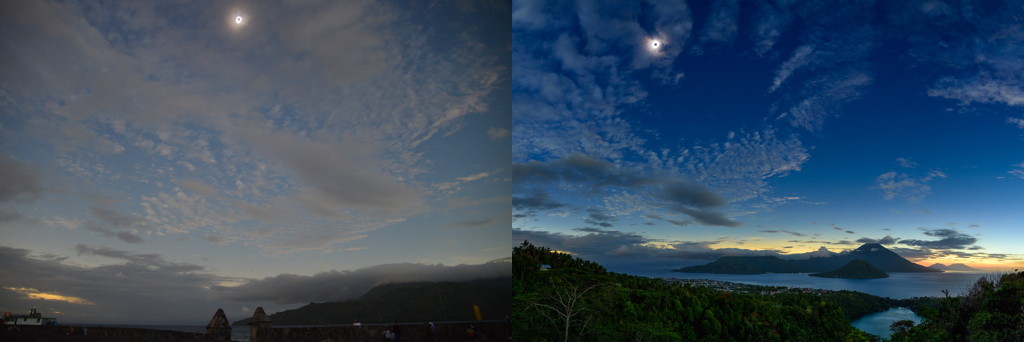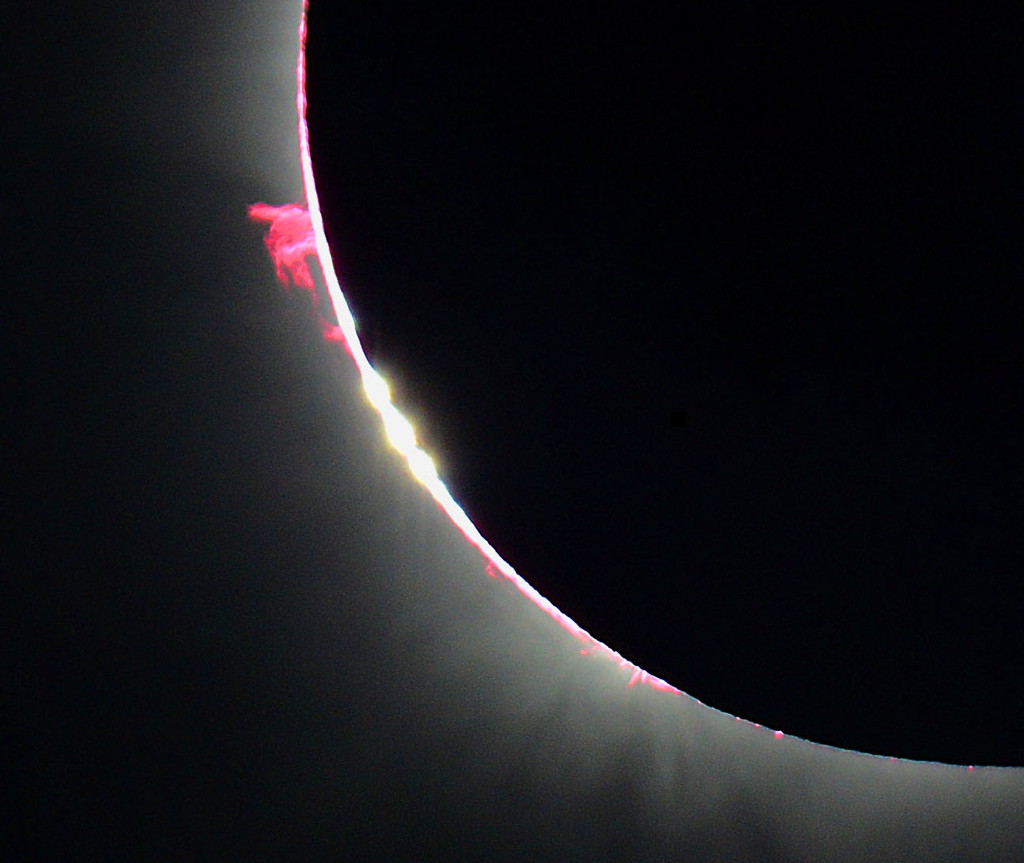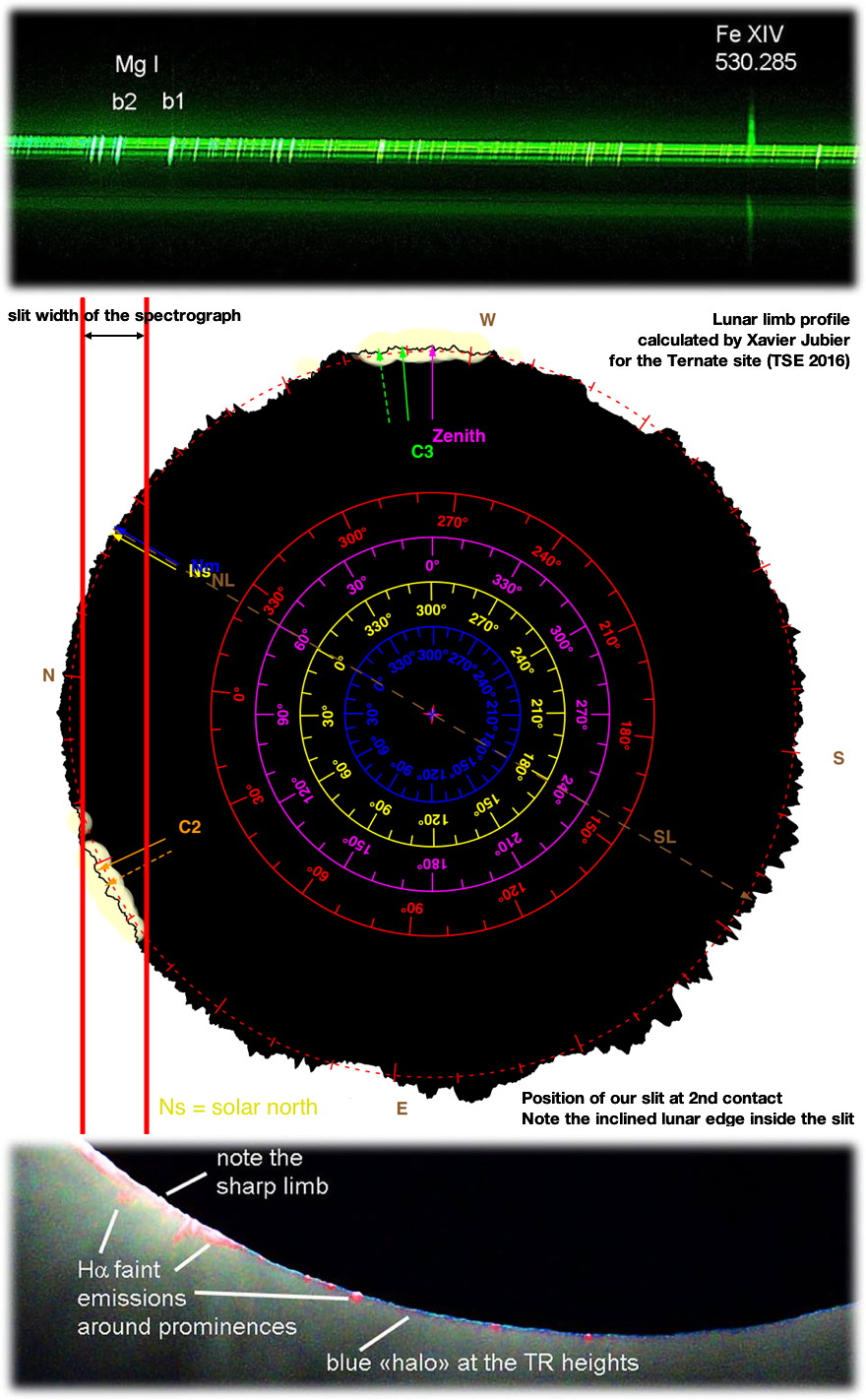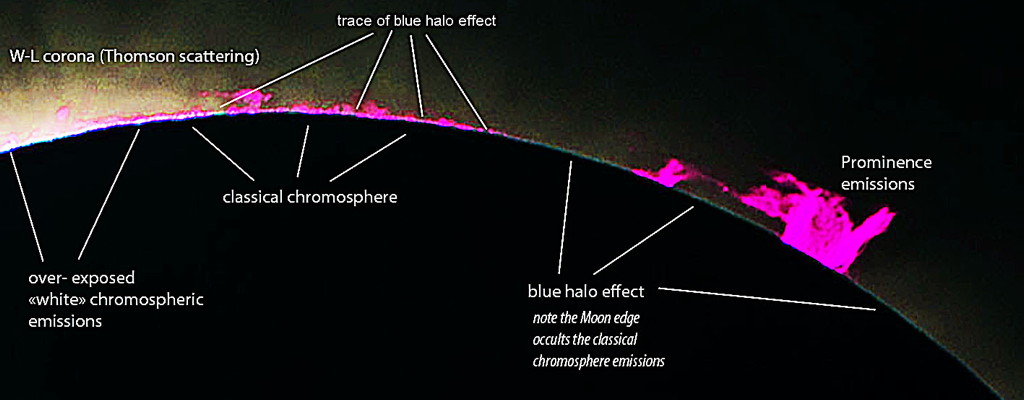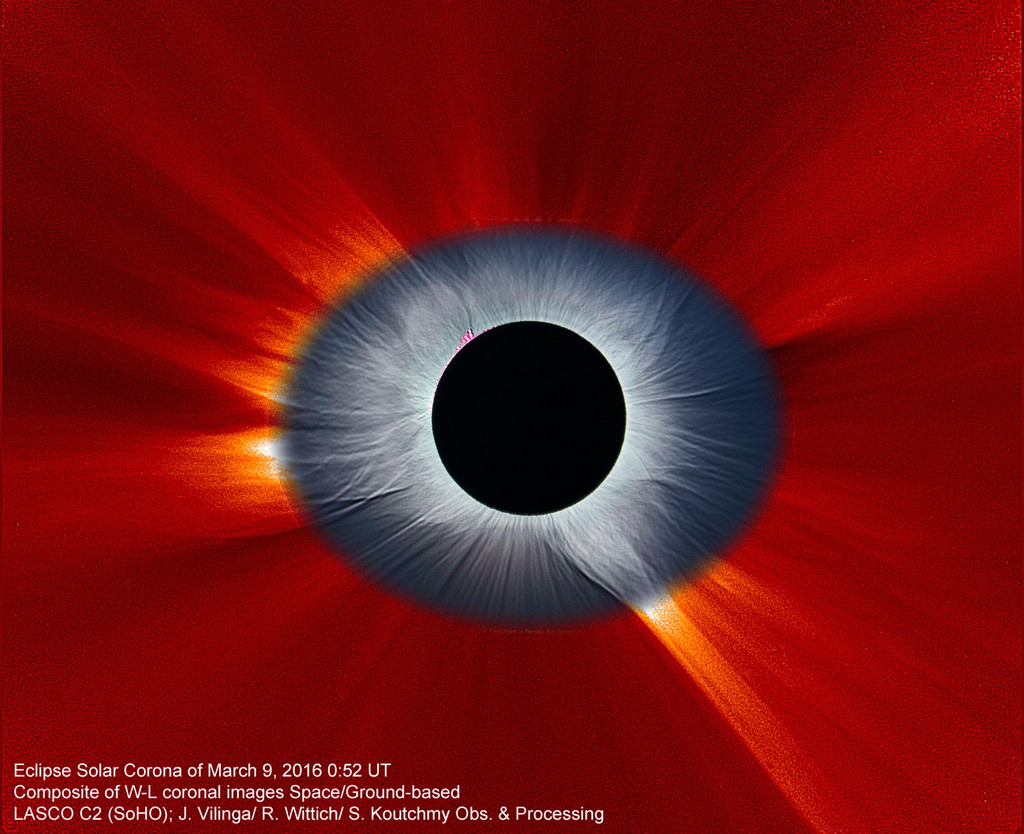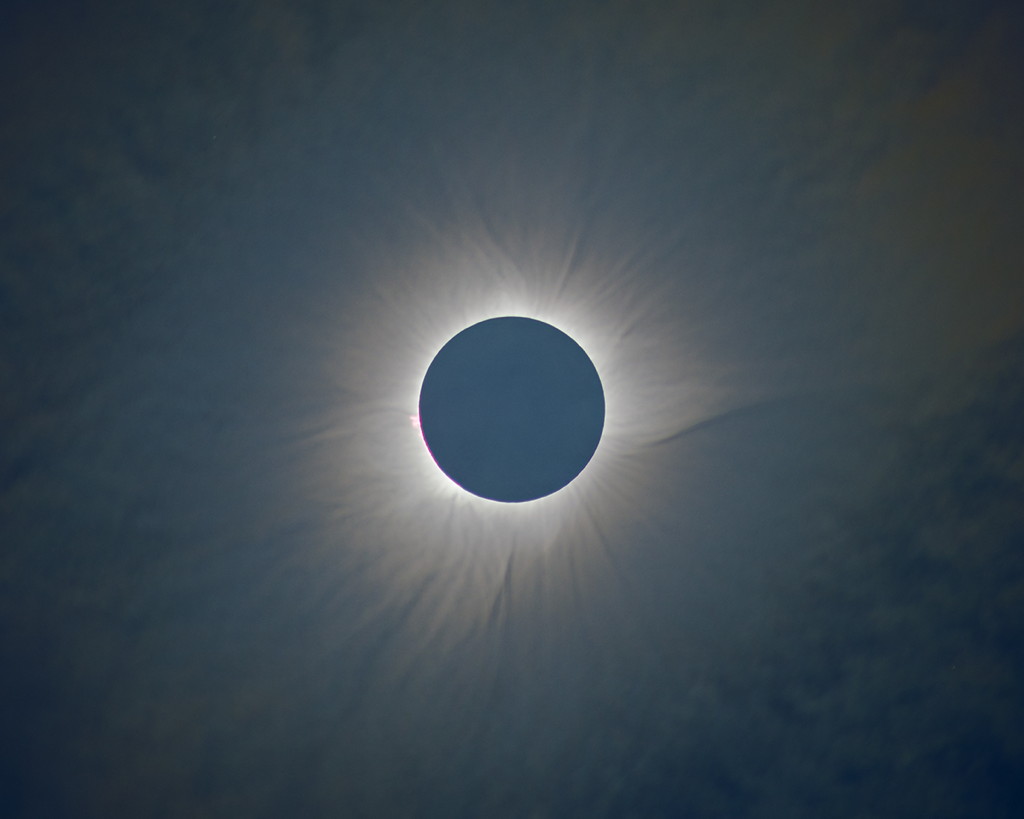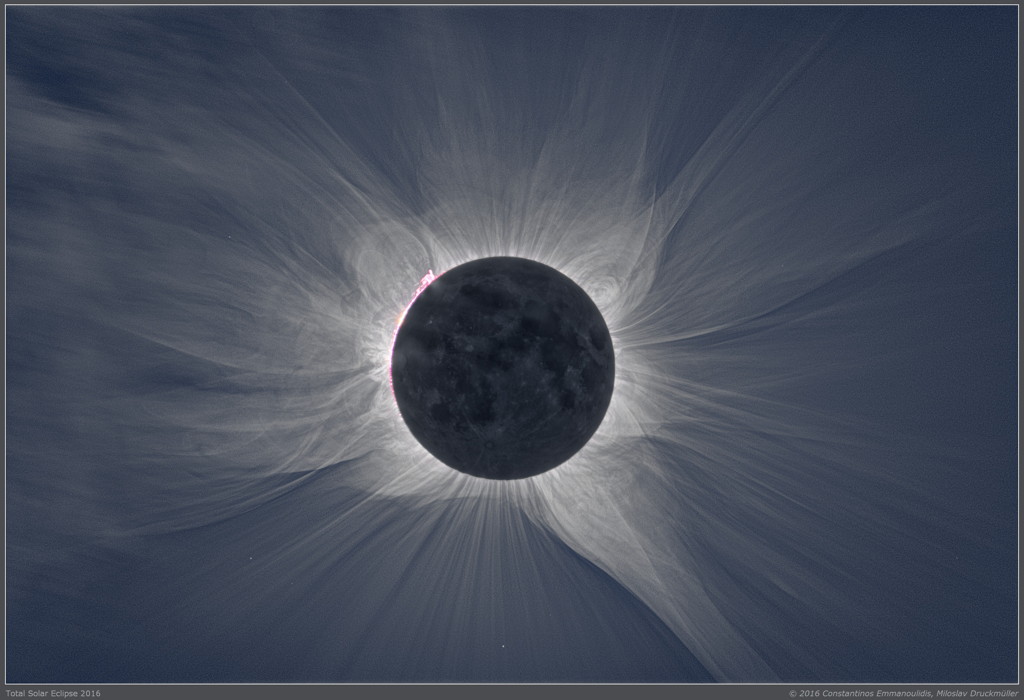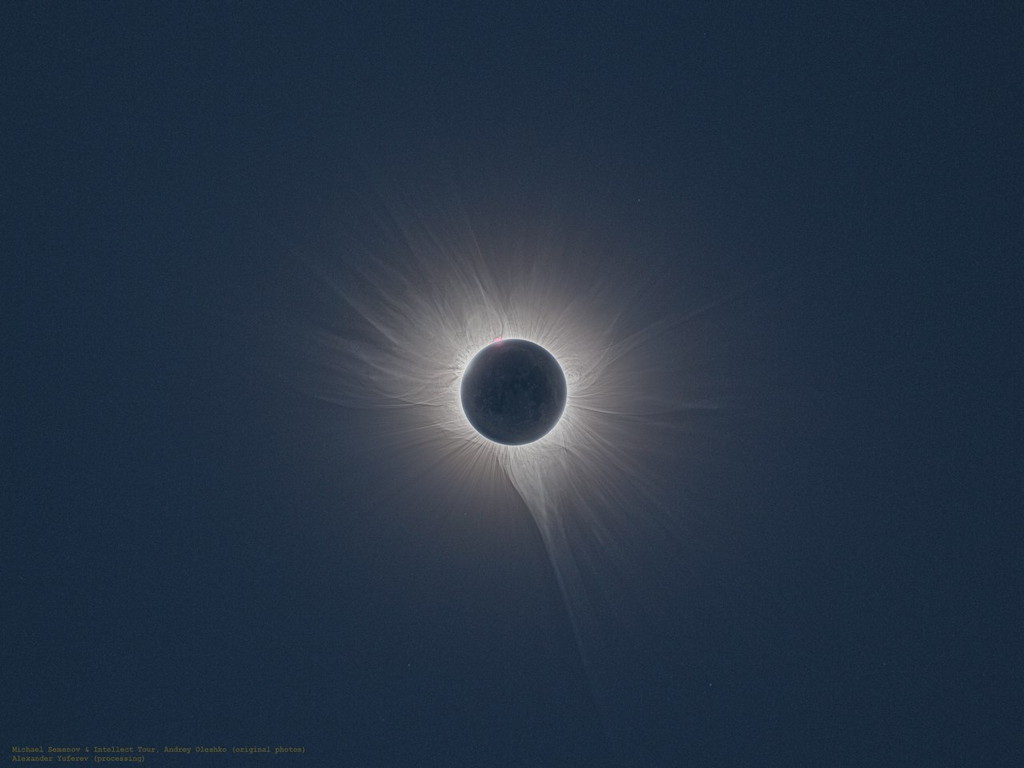| Home > Eclipses > Solar Eclipses > Total Solar Eclipse of 2016 March 9 |
|
|
||||||||||||||||||||||||||||||||||||||||
|
The point of greatest eclipse (totality phase during 4 min 9 sec) was located in the middle of the Pacific Ocean east of Indonesia where about 10 million people lived inside the totality path. To observe the 2016 March 8-9 total solar eclipse, I proposed tours only in eastern Indonesia, in the Northern Maluku, where the ground weather prospects were the best and the duration the longest. However the local infrastructure was fairly limited. The Woleai atoll, belonging to Micronesia, was offering the longest land-based duration very close to its maximum but its airstrip was out of order so the logistics would have been far too complex even though going there on a boat was a possibility. There were numerous viewing locations along the path, however paying close attention to the weather patterns and local terrain topography was mandatory unless you were on a cruise ship in the Pacific Ocean where the sky was usually clearer. Moreover the 2015-2016 El Niño episode did somewhat improve the weather prospects in Indonesia. Click on thumbnails for a larger version
|
||||||||||||||||||||||||||||||||||||||||
|
||||||||||||||||||||||||||||||||||||||||
|
||||||||||||||||||||||||||||||||||||||||
|
||||||||||||||||||||||||||||||||||||||||
|
||||||||||||||||||||||||||||||||||||||||
Xavier M. Jubier
1999 August 11
2001 June 21
2001 December 14
2002 December 4
2003 November 23
2005 April 8
2005 October 3
2006 March 29
2006 September 22
2008 February 7
2008 August 1st
2009 January 26
2009 July 22
2010 January 15
2010 July 11
2012 May 20
2012 November 14
2013 May 10
2013 November 3
2014 April 29
2015 March 20
2016 September 1st



